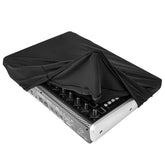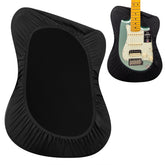How to Properly Maintain a Violin: Keeping Your Instrument Youthful
In the process of learning the violin, proper maintenance is key to ensuring your instrument remains in good condition. Good maintenance not only extends the lifespan of the violin but also preserves its sound quality and appearance. In this article, we will explore some simple yet effective violin maintenance tips to help you keep your instrument in optimal condition.
1. Temperature and Humidity
The violin is highly sensitive to temperature and humidity. Extreme temperatures and humidity levels can damage wooden instruments. Therefore, it is important to avoid exposing the violin to direct sunlight or environments with high temperature and humidity. Maintaining proper indoor temperature and humidity is crucial for violin maintenance.
2. Regular Cleaning
Regularly cleaning the violin prevents dust, dirt, and sweat from accumulating on the surface of the instrument and the bow. Use a clean, soft cloth to gently wipe the surface of the violin and the bow, especially after use or when not in use for extended periods. Avoid using cleaning agents containing alcohol or chemicals to prevent damage to the instrument's surface.
3. Maintain String Tension
Maintaining the proper tension of the violin strings is essential for preserving sound quality and playability. Check the strings regularly for looseness and adjust the tension as needed. Also, pay attention to selecting the appropriate brand and model when replacing strings to ensure sound quality and performance.
4. Regular Inspection of Instrument Structure
Regularly inspect the structure of the violin for cracks, looseness, or other signs of damage. If any issues are found, seek prompt repair by a professional instrument technician. Avoid attempting repairs yourself to prevent further damage.
5. Use a Suitable Case
Using a suitable case for storing the violin provides additional protection. Ensure the interior of the case has sufficient padding and protective pads to prevent damage to the violin during transportation or storage.
6. Regular Maintenance
Regular maintenance of the violin ensures it remains in optimal playing condition. This includes regular string replacement, bridge adjustment, and lubrication of the pegs, among other tasks. If you are unsure how to perform maintenance, it's best to consult a professional instrument teacher or technician.
Conclusion
Proper maintenance is crucial for keeping the violin in good condition and extending its lifespan. By following the above maintenance tips, you can ensure that your violin maintains its best sound quality and appearance, adding more enjoyment and fulfillment to your musical journey. Remember to care for your violin, and it will reward you with beautiful music and joyful moments.







